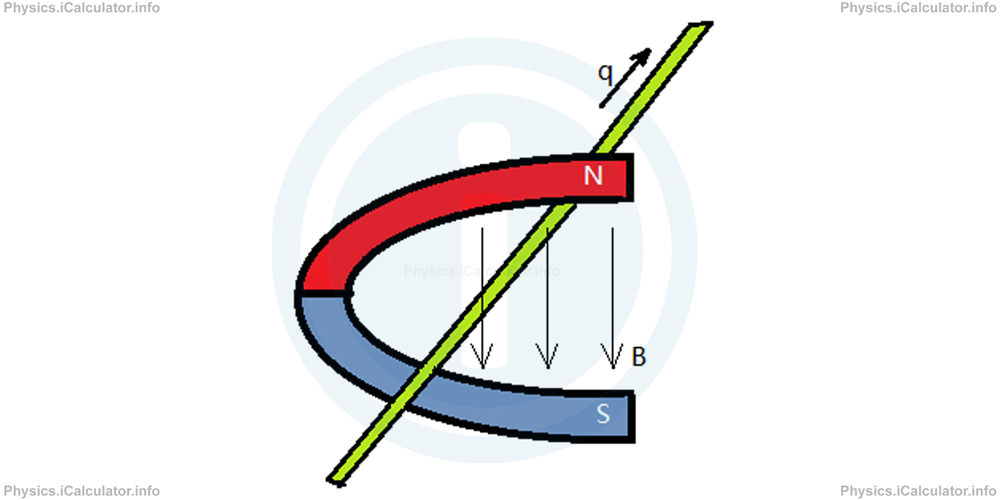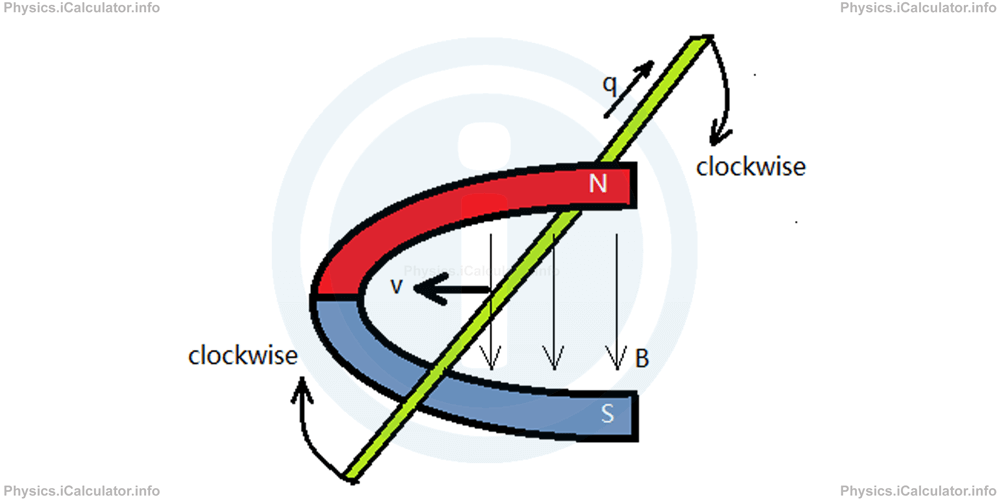Menu
Physics Lesson 2.5.5 - Applications of cross product in Physics
Please provide a rating, it takes seconds and helps us to keep this resource free for all to use
Welcome to our Physics lesson on Applications of cross product in Physics, this is the fifth lesson of our suite of physics lessons covering the topic of Vector Product of Two Vectors, you can find links to the other lessons within this tutorial and access additional physics learning resources below this lesson.
Applications of cross product in Physics
In Physics, there are a lot of applications of vector cross product. They are much more than dot product applications. Let's discuss briefly some of them.
1. Moment of force M⃗ as cross product of Force F⃗ and linear distance from the turning point Δx⃗
The formula of Moment of force therefore is:
M⃗ = F⃗ × Δx⃗It is obvious Moment of force is a vector quantity as unlike Work, it is obtained through the cross product of Force and Linear distance from the turning point.
2. Magnetic force F⃗ of a conductor at rest as a cross product of Magnetic induction B⃗ and the conductor length L⃗ multiplied with the scalar I (current).
The formula of Magnetic force therefore is
F⃗ = I × (B⃗ × L⃗)3. Magnetic force F⃗ of a moving conductor as a cross product of Magnetic induction B⃗ and Velocity v⃗ multiplied with the scalar q (electric charge).
The formula of Magnetic force in this case is
F⃗ = q × (B⃗ × v⃗)4. The angle between two forces F⃗1 and F⃗2 can be calculated using the cross product if the magnitudes of the two vectors F⃗1 and F⃗2 and that of F⃗1 × F⃗2 are known,
and so on.
Example
A conducting wire is placed between the two poles of a horseshoe magnet as shown in the figure. The magnetic field lines (the induction B⃗) lie from the North to the South pole of the magnet. Electric charges flow through the conducting wire in a direction that is away from us (from us to the sheet). To make the reader have a better idea, the figure is slightly inclined.

If the magnitude of the magnetic induction is b⃗ = 4 Tesla (B⃗ = 4 T) and the amount of electric charges flowing through the wire is q = 6 Coulombs (q = 6 C), find the velocity v⃗ of wire (both magnitude and direction) if it forms a right angle to the magnetic field lines. The magnetic force produced is F⃗ = 0.2N
.Solution
From the figure, it is easy to see that we move clockwise from q-direction to B-direction. Therefore, if you consider the wire as the handle of a screwdriver, and giving that you are rotating it clockwise, the screw will move forward. Thus, in this case, the wire will move due left.
Also, from the clues, it is obvious that the wire is perpendicular to the magnetic field lines. This means sin θ = sin 900 = 1. 
The magnitude of velocity is calculated by the equation
From the cross product rules, we have
Substituting the known values, we obtain (giving that sin 90° = 1)
|v⃗| = 0.2N/6 C × 4 T
= 1/120 m/s
= 0.0083 m/s
You have reach the end of Physics lesson 2.5.5 Applications of cross product in Physics. There are 6 lessons in this physics tutorial covering Vector Product of Two Vectors, you can access all the lessons from this tutorial below.
More Vector Product of Two Vectors Lessons and Learning Resources
Whats next?
Enjoy the "Applications of cross product in Physics" physics lesson? People who liked the "Vector Product of Two Vectors lesson found the following resources useful:
- Applications Feedback. Helps other - Leave a rating for this applications (see below)
- Vectors and Scalars Physics tutorial: Vector Product of Two Vectors. Read the Vector Product of Two Vectors physics tutorial and build your physics knowledge of Vectors and Scalars
- Vectors and Scalars Video tutorial: Vector Product of Two Vectors. Watch or listen to the Vector Product of Two Vectors video tutorial, a useful way to help you revise when travelling to and from school/college
- Vectors and Scalars Revision Notes: Vector Product of Two Vectors. Print the notes so you can revise the key points covered in the physics tutorial for Vector Product of Two Vectors
- Vectors and Scalars Practice Questions: Vector Product of Two Vectors. Test and improve your knowledge of Vector Product of Two Vectors with example questins and answers
- Check your calculations for Vectors and Scalars questions with our excellent Vectors and Scalars calculators which contain full equations and calculations clearly displayed line by line. See the Vectors and Scalars Calculators by iCalculator™ below.
- Continuing learning vectors and scalars - read our next physics tutorial: Vectors and Scalars
Help others Learning Physics just like you
Please provide a rating, it takes seconds and helps us to keep this resource free for all to use
We hope you found this Physics lesson "Vector Product of Two Vectors" useful. If you did it would be great if you could spare the time to rate this physics lesson (simply click on the number of stars that match your assessment of this physics learning aide) and/or share on social media, this helps us identify popular tutorials and calculators and expand our free learning resources to support our users around the world have free access to expand their knowledge of physics and other disciplines.